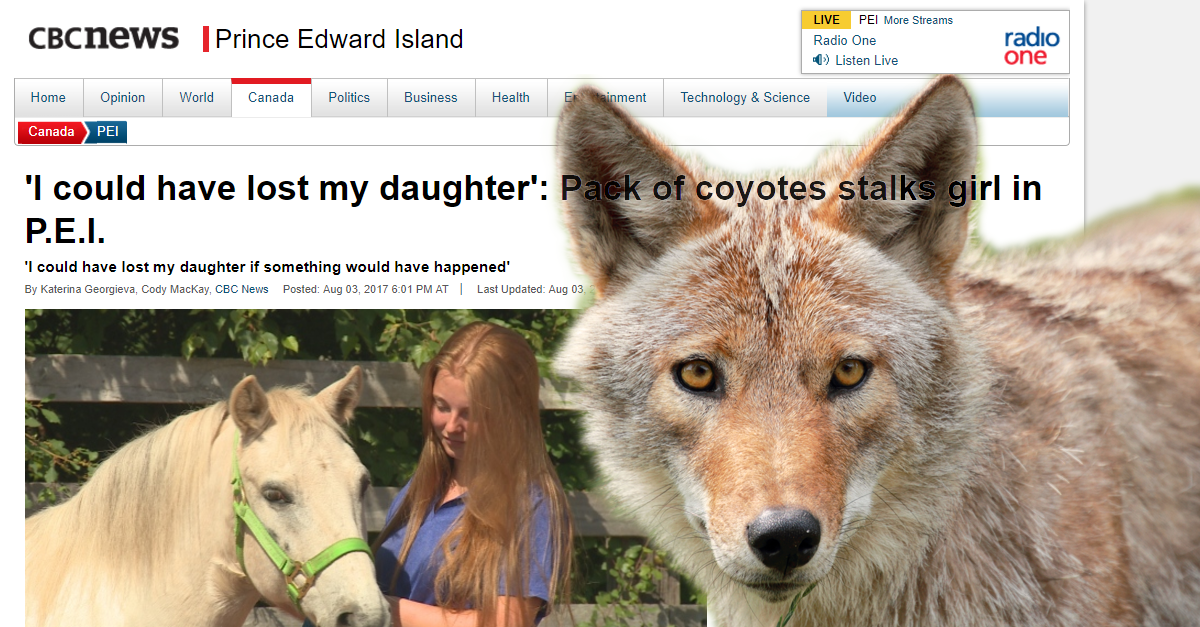
Dear Ombudsman Enkin,
An article on CBC’s website has alarmed me both as a former journalist, and as an advocate with a wildlife non-profit.
The article tells the story of a young woman who encountered coyotes while horseback riding in PEI ('I could have lost my daughter': Pack of coyotes stalks girl in P.E.I., August 3, 2017). It begins with a misrepresentation of the witness report. The lede states that the person involved, Sam Johnston, was ‘stalked’ by a pack of coyotes. The words of the witness were that the coyotes “ran toward” her in a V formation. Further down the story, a cutline states that “the 17-year-old was surrounded” by coyotes.
This could be a mere failure in the editing process, but considering the rest of the article, it points to a dangerous level of sensationalism.
In articles concerning wildlife, this can be offset by providing an interpretation of the non-human animals’ actions by an unbiased source, such as a field biologist, naturalist, or members of non-profits who have experience and knowledge of such animals’ behaviour.
The lack of educational information, or of providing a source that could speak to the behaviour of the animals in question, creates a level of fear and does little to assuage anxiety or create any understanding of what happened that July day. This article creates fear out of an event that was quite possibly innocent, when stripped of sensational overtones: a girl was riding her horse when approached by coyotes, she made big sounds and waved her arms, the coyotes ran away.
It behooves the CBC to create policy within the organization in how journalists can better represent wildlife and other non-human elements in their articles, as well as recognize, and in this case publicly address, the failure to do so and the potential harm such sensationalism could bring to Canadians, and the animals with whom we share our land.
I look forward to your review of this article and response regarding potential resolutions.
Sincerely,
Michael Howie
Spokesperson
The Fur-Bearers

